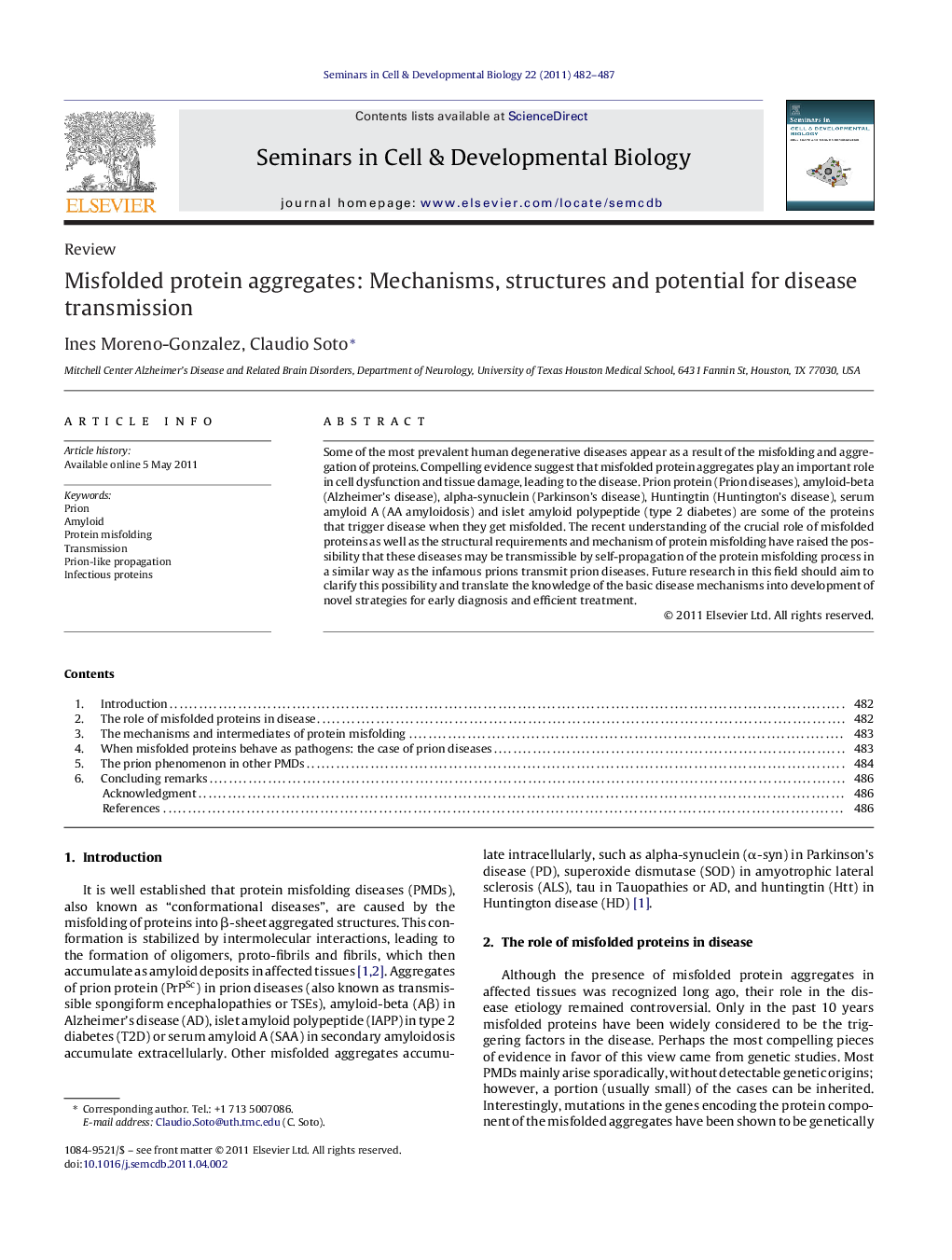| کد مقاله | کد نشریه | سال انتشار | مقاله انگلیسی | نسخه تمام متن |
|---|---|---|---|---|
| 2202874 | 1100401 | 2011 | 6 صفحه PDF | دانلود رایگان |

Some of the most prevalent human degenerative diseases appear as a result of the misfolding and aggregation of proteins. Compelling evidence suggest that misfolded protein aggregates play an important role in cell dysfunction and tissue damage, leading to the disease. Prion protein (Prion diseases), amyloid-beta (Alzheimer's disease), alpha-synuclein (Parkinson's disease), Huntingtin (Huntington's disease), serum amyloid A (AA amyloidosis) and islet amyloid polypeptide (type 2 diabetes) are some of the proteins that trigger disease when they get misfolded. The recent understanding of the crucial role of misfolded proteins as well as the structural requirements and mechanism of protein misfolding have raised the possibility that these diseases may be transmissible by self-propagation of the protein misfolding process in a similar way as the infamous prions transmit prion diseases. Future research in this field should aim to clarify this possibility and translate the knowledge of the basic disease mechanisms into development of novel strategies for early diagnosis and efficient treatment.
Journal: Seminars in Cell & Developmental Biology - Volume 22, Issue 5, July 2011, Pages 482–487